Following the most recent distribution update on Distrowatch – for the past 12 months, the statistics have barely changed and continues to be mostly in the favor of the better known operating system that has been around for a very long time.
Surprisingly, over 170 distributions are still on the waiting list; and quite a handful of these are even dating back to as far as five years ago, interestingly enough, some of these distros have actually gained reasonable traction. This proves that a distro is not necessarily bad or unworthy if it doesn’t get or hasn’t gotten the approval of Distrowatch.
Recommended Reads:
- 10 Top Most Popular Linux Distributions of 2020
- Top 15 Best Security-Centric Linux Distributions of 2020
It is important to know that although the top dogs – Ubuntu, Linux Mint will always be there and maybe unmovable for now, you mustn’t disregard distros that have and show great potential.
With most distributions released nowadays, is an exceptional offering/feature(s) – most at times – that makes it stand out amongst the crowd. Such is the case of those listed down below.
It is particularly difficult handpicking distributions to look out for in 2020, cause, to be honest, they are all great in their little ways with some meant for all and others offering features targeted at a particular set of users – which is why we’ll continually update this article as needed.
As usual, we at TecMint will always have your best interest at heart. Without much ado, let’s quickly delve into our pick for the year 2020.
1. antiX
antiX is a fast and easy-to-install Debian-based Live CD built for stability, speed, and compatibility with x86 systems. It is under active development in Greece with one of its major features being the “antiX Magic” – a computing environment designed to bring old computers back to life. It provides legacy 64-bit and 32-bit UEFI live bootloaders which enable installers to save their setup/customization choices across boots.
antiX also offers users the option to create live-USBs with the “dd” command, Live remaster and snapshot, live persistence, and a significantly small footprint that makes it memory friendly, and fast booting, and Fluxbox, IceWM, or JWM for desktop options.
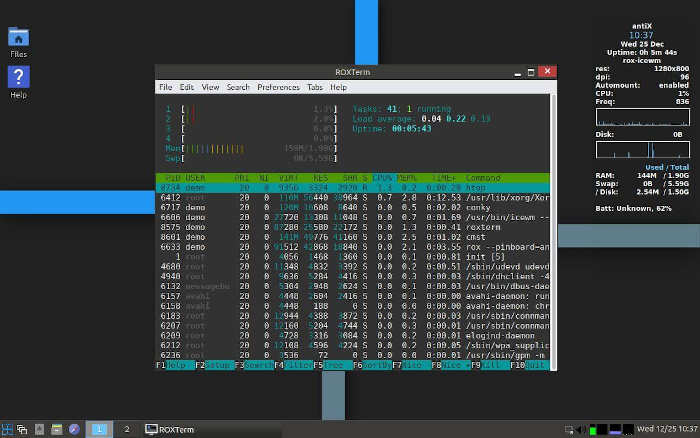
2. EndeavourOS
EndeavourOS is a terminal-centric distro designed to be lightweight, reliable, user-friendly, and customizable. It is developed in the Netherlands with a dynamic and friendly community at its core and together, the developers aim for it to be an ideal successor to Antergos.
Just like Antergos, EndeavourOS is a rolling release based on Arch Linux to be completely customizable. Xfce is its default DE but it runs just as smoothly with several other favorites including Gnome, i3, Budgie, Deepin, and KDE Plasma. To top it off, it features both online and offline installers.
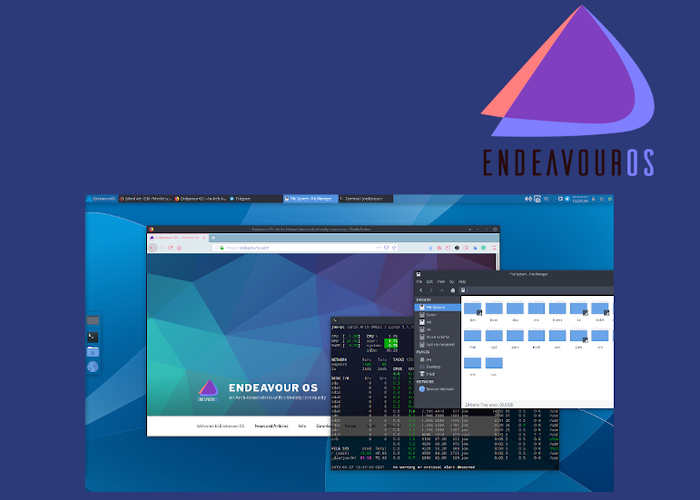
3. PCLinuxOS
PCLinuxOS is a free user-friendly Linux distribution developed independently for x86_64 systems. While it can be installed permanently to a hard drive, it is distributed as a LiveCD/DVD/USB ISO image which allows users to run it without making any changes locally.
Locally installed versions use APT and for desktop environment options, its goto choices are KDE Plasma, Xfce, and Mate. According to the developers, PCLinuxOS is “so cool ice cubes are jealous“. Can you validate the developers? Take PCLinux for a spin.
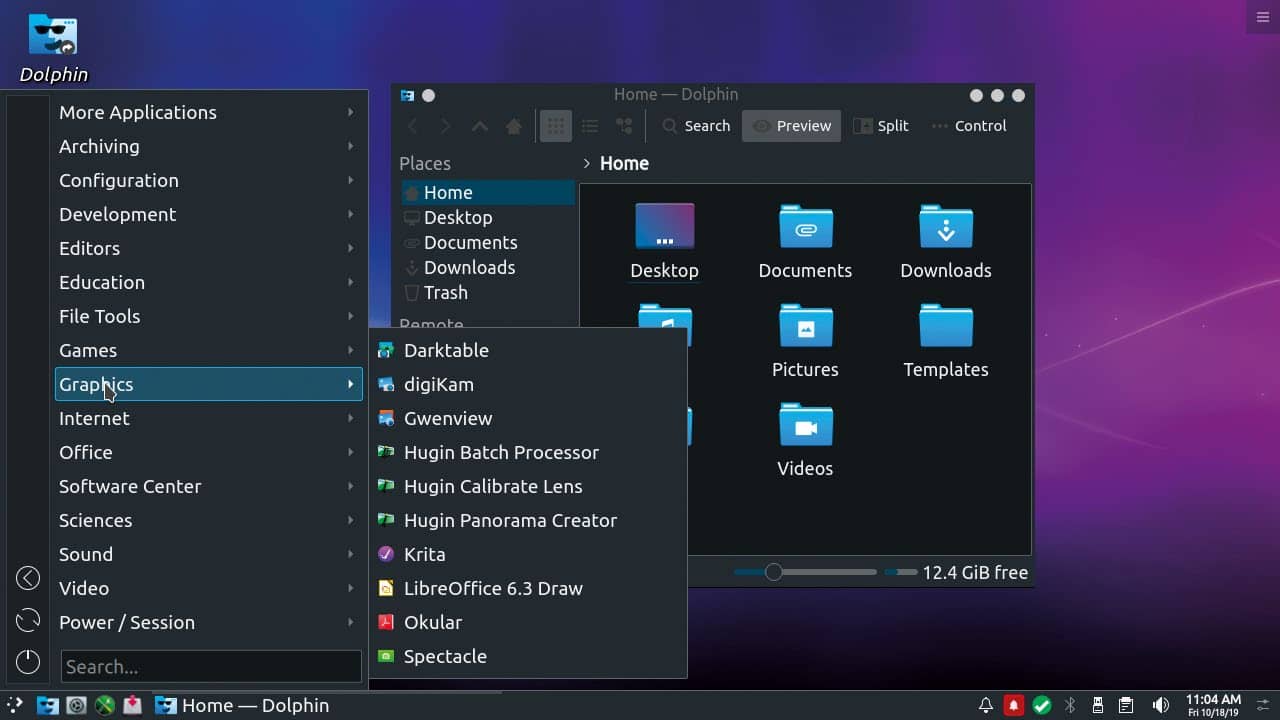
4. ArcoLinux
ArcoLinux is a full-featured Arch Linux-based distribution developed in a unique way to most Linux distros as its development takes place in 3 branches: ArcoLinux – the typical full-featured distro, ArcoLinuxD – a minimal distro with installation scripts, and ArcoLinuxB – a technical project that enables users to build their distro themselves.
ArcoLinux is under active developed in Belgium with community contributions from across the globe which factor into its stability with several desktop environments such as Openbox, Awesome, Budgie, Gnome, Deepin, and bspwm, to mention a few. It also has various video tutorials to help those interested in acquiring new skills so nobody gets lost on the Linux path.
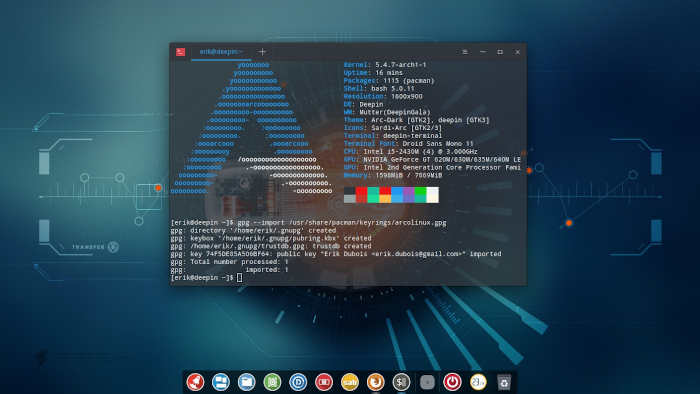
5. Ubuntu Kylin
Ubuntu Kylin is an official Ubuntu variant created for Chinese users using the simplified Chinese writing system. It has been under active development since 2004 and has been gradually gaining traction as the numbers on distro watch will confirm.
Ubuntu Kylin features one of the most beautiful user interfaces in any default Linux setup. It shipped with Ubuntu’s Unity desktop until it migrated to a Mate-based custom alternative, UKUI. Evidently, that was a good decision. It also ships with a list of default applications tailored to the preference of Chinese users and the developers declare that Kylin is “Simplified, Traditional and Easy, Warm and Spiritual”.
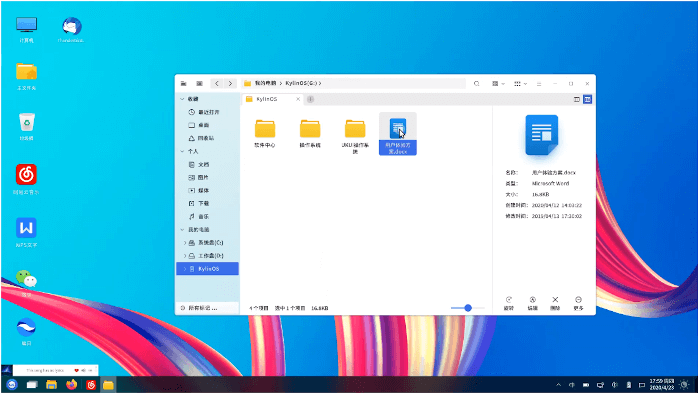
6. Voyager Live
Voyage Live is an aesthetic-centric Live DVD featuring the Xfce desktop environment, the Avant Window Navigator, Conky, and 300+ photographs and Gifs. Right off the intro bat, this distro comes with the perfect tools that enable Linux users to customize the look and feel of their operating system.
It is based on Xubuntu with several other versions in development including the GE edition that uses the GNOME shell, a GE edition for gamers, and an edition maintained based on Debian’s stable branch. Voyager Live is headquartered in France, and right next to a beautiful UI is its enthusiasm for data privacy, ad-free computing, and no viruses.
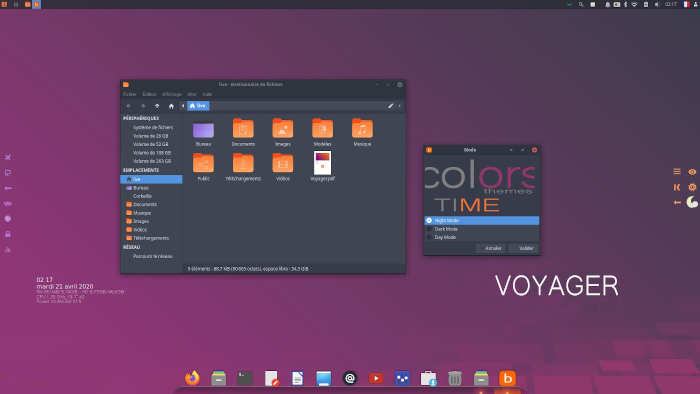
7. Elive
Elive (a.k.a Enlightenment live CD) is a Debian-based distro and live CD developed in Belgium to be a faster, friendlier, and feature-rich replacement for the high cost and ‘ineffective‘ default operating systems out there. It is designed with the aim of bringing equipment as old as 15 years back to live with a rejuvenated UI worthy of a modern user. It is also written to take advantage of the latest features that recent PCs have to offer.
Elive has added 2500+ packages that make it unique to other Debian-based distros, a live mode with its own persistence features, a unique installer, and several customization options made a lot easier. Its minimum installation requirements are 256 MB RAM / 500 Mhz CPU – For 128 MB / 300 Mhz.
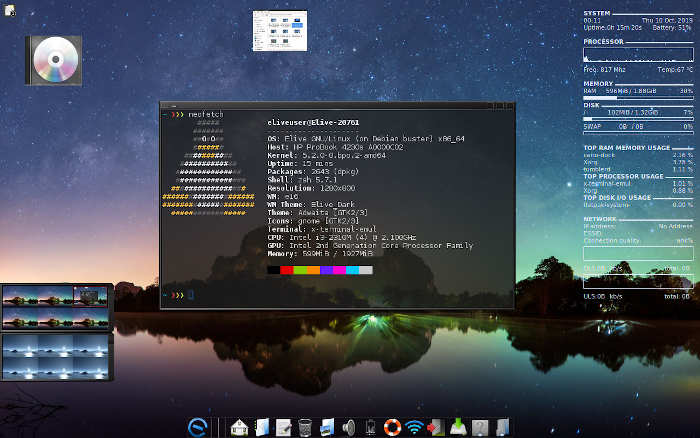
8. Dahlia OS
dahlia OS is a secure, lightweight Linux operating system created to be user friendly and responsive on modern 64-bit Intel and ARM processors. The project is forked from Google’s Fuchsia and is therefore powered by the same technology.
The project’s aim is to bring containerization and microkernels to the convenience of desktop computing. It features a beautiful user interface similar to Fuchsia and this is accomplished using pangolin Desktop, a DE designed for dahlia OS from the ground up using Flutter.
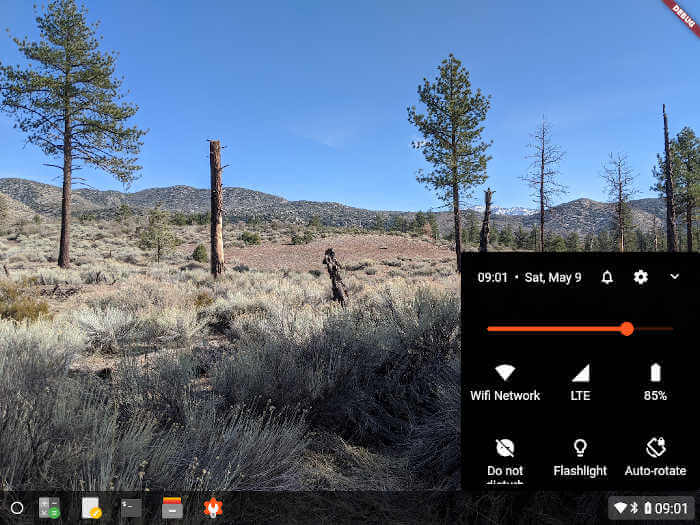
9. BackBox Linux
BackBox Linux is an Ubuntu-based distribution created with the aim of promoting the culture of security in IT environments. Designed to be the ideal operating system for carrying out penetration tests and security assessments, BackBox Linux ships with a small but concise list of essential applications housed in the minimalist desktop environment, Xfce.
BackBox Linux is headquartered in Italy and the company even offers a variety of penetration testing services to simulate attacks on your application or network. Contact them if you’re interested in more information or for an initial consultation.

10. Void
Void is an independent general-purpose Linux distribution developed in Spain for Intel x86®, ARM® and MIPS® processor architectures. It is a rolling-release with a package system that allows users to quickly install and manage software provided in binary packages or built directly from source using the XBPS source packages collection.
One of the things that make Void stand out from the several trillions of distros today is that it has been built from the ground up. Its build system and packager manager have been built from scratch to provide users with an original and immersive computing experience.
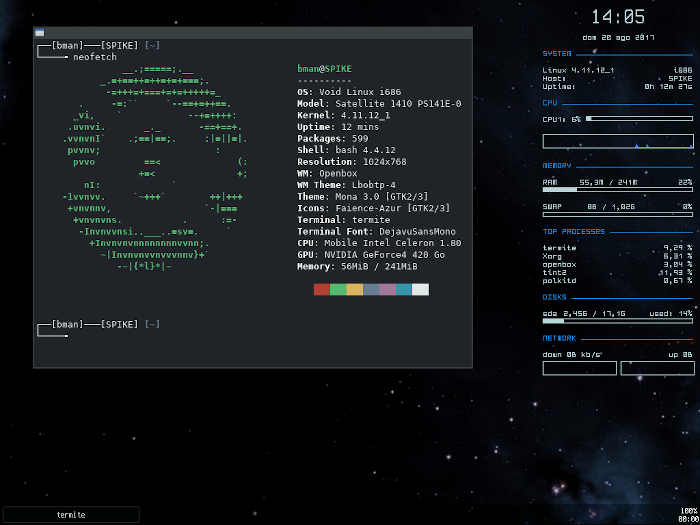
Of course, these aren’t the only distributions to look out for this year but so far, they have been getting the most attention in developer and Linux enthusiast circles. What is common to all of them is the fact that they were created as a response to solving a problem in one niche or the other. We’ll see how well they do this year.
Do you know other convincingly fast and upcoming Linux distributions we should keep an eye on this year? Get in the comments box and share your opinions with me. Until next time, stay healthy. Stay safe!


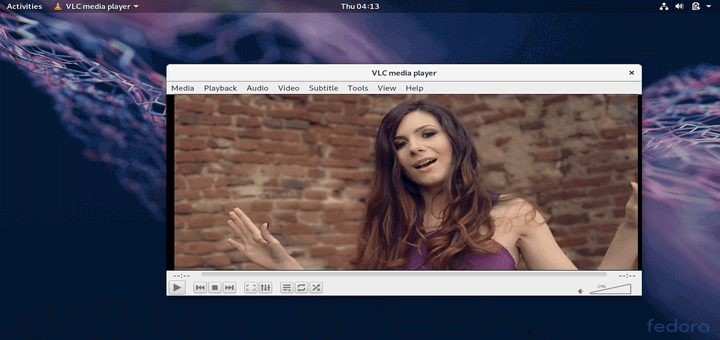
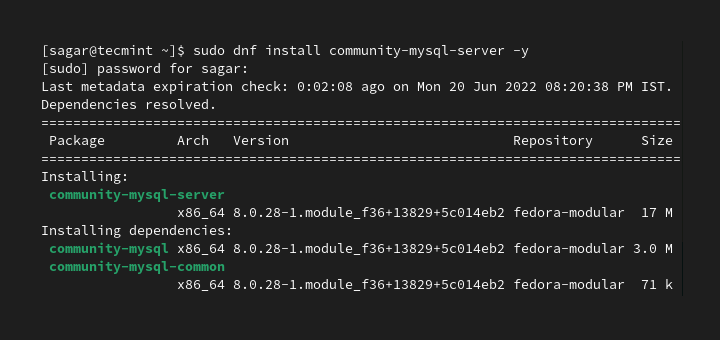



Manjaro is the only arch-based system for me. After experimenting with several, I’ve found that Manjaro Continues to be my ongoing “go-to” distro for all of my laptops and Desktops because it invariably is the easiest to install and maintain regardless of hardware performance differences, Manjaro is the only distro apart from Slackware that has never failed me.
Manjaro is awesome. Although, it is buggy on some machines when users dual-boot it with Windows or run it on Virtual Box. Either way, I’m happy that you enjoy using it.
You really don’t know what you are writing about!!! Endeavor OS terminal centric? GhostBsd is Linux?
It is what Endeavor writes on their site!
“EndeavourOS is a terminal-centric distro, so we don’t offer you GUI tools out of the box to make your jumpstart easier, instead, we offer you the opportunity to give you full control from the start in creating a system that suits your idea in computing.”
So instead of blaming no knowledge, you’re better off clicking through. And there is no claim GhostBSD is Linux “… based on the awesome Free BSD”.
“There is no claim GhostBSD is Linux “… based on the awesome Free BSD”.”
Yes, there is. The first line of Item #8 claims exactly that. So you either did not read the article or are trying very hard to ignore the statement.
The title of the article is “Top Linux Distributions To Look Forward To In 2020”, though, which does imply that the distributions listed are Linux-based.
You’re right. I meant to write that Ghost BSD is Unix but as you’ve pointed out the list should contain only Linux-based distros so I’ll remove it altogether
There is also Dahlia OS, which is technically a fork of Fuchsia, but they offer Linux based builds that use the same desktop.
Thanks. I’m surprised that I didn’t know about this Dahila before now. I’ll add it
GhostBSD is not a Linux distro – it is based on FreeBSD, which is quite distinct from Linux.
Thanks for pointing that out. An oversight on my part
“GhostBSD is an elegant Canadian Linux distro based on the awesome Free BSD”.
Sorry, but GhostBSD IS NOT a Linux distro. If anything, it is a BSD distro based on FreeBSD. Other than both being offshoots of Unix and being free, Linux and BSD have very little in common. They are not compatible with each other.
I have installed SolusOS on my laptop. I did not like the Budgie desktop as I felt it heavy. So, I installed Mate and it seems to work fine.
However, the touchpad click was not working. Also, as an IT consultant, I needed some of other packages like DKMS and I raised some package requests to SolusOS devs.
However, I did not get any updates from the Devs even after 48 hours. Finally, I removed SolusOS and installed Ubuntu Mate. I am planning to install Solydx as XFCE is my preferred desktop and Solydx is based on Debian stable.
Yeah it’s almost 2017 and you guys don’t even know how to add a link to a website for an OS you mention. Tecmint is stuck in the 80’s playing Disco music and giving half tutorials to readers.
@Raminda,
Yeah, you correct its 2017 and people are smart enough to know how to use Google to get links to specific OS..:)
yes but still they should post the links as it could be time saving people like me
where is deepin os? whether the operating system can be recommended? :/
Deepin os has been around for years ..this article was merely referring to new and upcoming distros with potential.
Why is slackware not mentioned?
Because it’s not based on Arch-Linux xD
SolusOS is not based on Arch. It is an independently developed OS.
You really need to learn how to link to the official web sites of the distros, instead of making people right click & search to get to them!
We’ll sure make the correction in the future..